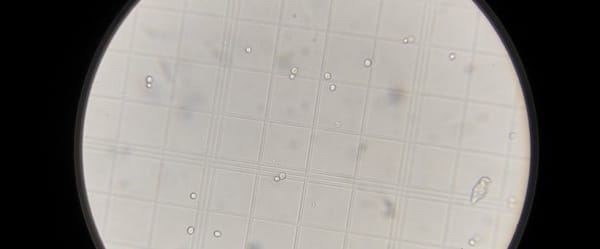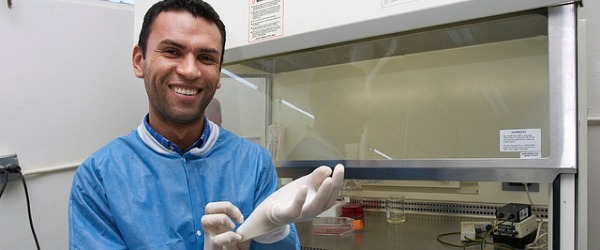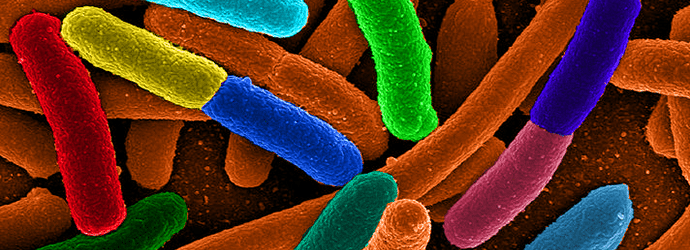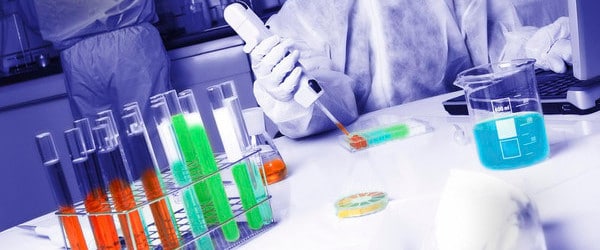Murine bone marrow derived dendritic cells (BMDCs) are one of the easiest primary cell cultures to generate. The beauty lies in the fact that in the end you have a large quantity of robust DCs that can be matured and used to study a variety of DC functions and DC-T-cell interactions.
But there are a few essential factors to consider that could drastically change the kind of DCs you arrive at:
The source – Mice
Use 8 to 12 week old mice for the best yields. BMDCs derived from older mice give lower yields and more spontaneous maturity. Mice that are injured, unhealthy or immune-compromised show effects on all immune cells, including DC numbers and differentiation.
The prep – Bone marrow cells
Though many labs prefer to get rid of erythrocytes before they start any leukocyte cultures, it is one step that can be easily skipped. All cells other than those of the myeloid lineage will be selectively depleted within the first few days of the culture. You can actually see your pellet change from red to pink to white with increasing days of culture. And you can also prevent any harmful effects of the lysis buffer components on your cells.
The environment – Cell density and culture medium
The rule of thumb for cell cultures is 1 – 2 million cells per ml. DCs do not mind the dense conditions, as they love cell-to-cell contact. Also, after 3 days of culture, most non-myeloid cells die off leaving extra space for the DCs to thrive. However, use too many cells (3 million/ml and above), and you risk a higher chance of spontaneous maturation.
BMDCs do great in basic RPMI medium with L-Glutamine (2 mM), fetal calf serum (FCS; 5 – 10%) and the regular array of antibiotics. They do not need expensive media with a lot of special factors. However, it’s a good idea to also add β-mercaptoethanol (50 μM) to primary cultures as a reducing agent. Medium should be replaced on the 3rd day after start of culture and then every 2nd day after. A complete change to fresh medium is not necessary and a half-old-half-new protocol works well too.
FCS is one component that profoundly influences BMDC generation. You want to use FCS that gives a good yield of cells, but does not stimulate or inhibit the DCs on its own. The FCS you choose should not give an all-MHC-IIhi population and the cells should still be receptive to external stimulus.
Even different FCS lots or batches of the same product could drastically affect BMDC generation. So, before your lab begins culturing BMDCs, ask for small test aliquots of FCS from a variety of companies and make test cultures for a side-by-side comparison. If you plan to work on DCs for a long time, it is wise to invest in buying numerous bottles of the same batch or you can ask the company to reserve them for you.
The tools and techniques – Plates and pipettes
Sterile plastic petri plates work well for culturing BMDCs. Matrix coated plates or glass plates can induce DC maturation and skewing to the adherent macrophage phenotype. Avoid glass, even when pipetting the DCs while changing the culture medium. Also, too much shearing, strong pipetting or high centrifugation forces will induce maturation.
The boost – Cytokine
What finally directs the heterogeneous population of hematopoietic cells to a selective single cell type is the cytokine you add. Consider these points when choosing:
- GM-CSF (20 – 50 ng/ml) is by far the most common and effective cytokine used for BMDC generation
- GM-CSF gives a co-population of macrophages that adhere to the bottom of the plate, leaving a homogenous suspension of DCs in the culture, which can be easily separated
- Though IL-3, IL-4 and Flt3L lave been tested and used, each one has the disadvantages of harboring a different cell type on the side – neutrophils, mast cells, monocytes, plasmacytoid DCs or NK cells.
The end – Dendritic cells
After 9 – 12 days of culture, your cells will be ready to use. If all goes well, you will have a homogenous DC population that is 80 – 90% pure. The cells should have the following characteristics:
- Be easily distinguishable under the microscope as large cells with visible ‘dendrites’. Be CD11chi and CD11bhi with a MHC-II expression ranging from low to high depending on culture conditions
- They can be stimulated using an antigen of choice or with a general stimulant like LPS or TNFα. LPS provides a greater stimulus for acquiring a good MHC-IIhi population of mature BMDCs whereas TNFα is more subtle and physiological.
There you have it, one of the easiest cultures, didn’t I say?
References:
Inaba et al. (1992) Generation of large numbers of dendritic cells from mouse bone marrow cultures supplemented with granulocyte/macrophage colony-stimulating factor. J Exp Med. 176(6):1693-702.
Lutz et al. (1998) An advanced culture method for generating large quantities of highly pure dendritic cells from mouse bone marrow. J Immunol Methods 1;223(1):77-92.
Lutz et al. (2007) Factors influencing the generation of murine dendritic cells from bone marrow: The special role of fetal calf serum. Immunobiology. 212(9-10):855-62.






